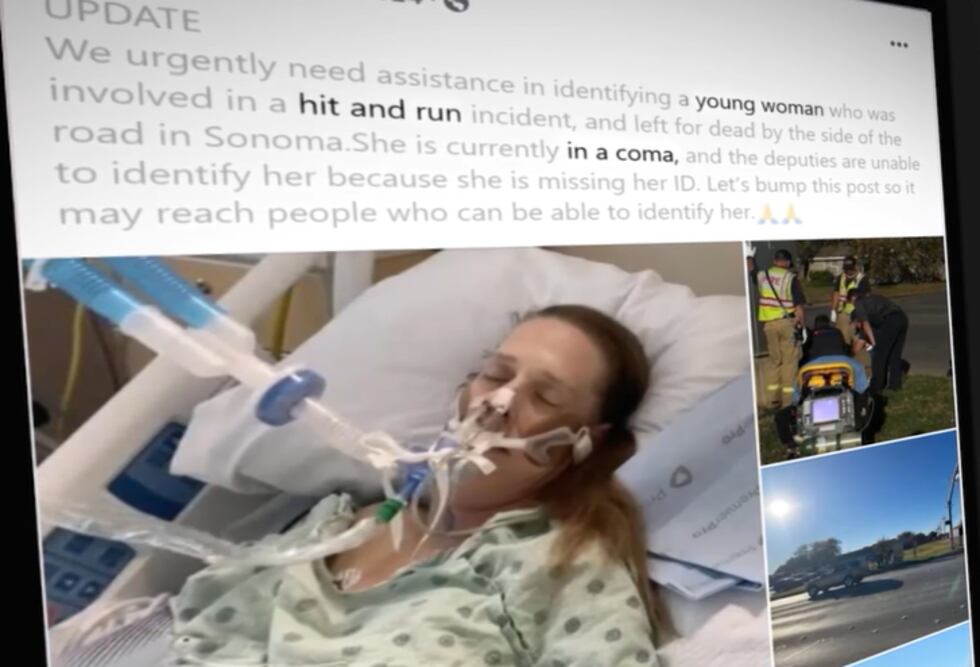(InvestigateTV) — You may have recently seen a post on Facebook showing a lost or injured pet, or perhaps a missing child.
The pictures are designed to catch the eye and tug at heartstrings and usually include an urgent plea to please bump the post.
This scam has been going on for a while, but it continues to trip people up, especially when it looks like your friends and family members are vouching for them.
Reporter Kristin Crowley takes an in-depth look at a social media scam that preys on your desire to help and shows you how to avoid falling for fake posts.
All of us have seen an urgent call for help on Facebook.
A Jane Doe is in a coma after a hit and run. You see things such as “bump this post” so that someone may help identify the Jane Doe.
There’s just one problem. That hit-and-run never happened.

InvestigateTV+ tracked down the woman in the post. Her name is Erin Stevenson, and she has been out of the hospital for over three years.
Stevenson really was in a coma, but it had nothing to do with a hit-and-run. Her dog accidentally head-butted her, cracking two of her back teeth and leading to a freak infection.
“Based on the swelling in the head and neck they were concerned that my airway would collapse so they were going to put me on a ventilator,” Stevenson told our investigators.
Erin’s husband took the picture that has been used in these posts. She originally shared the photo on social media after she recovered.
These posts a part of a scam designed to prey on a person’s desire to help, but what does this scam actually accomplish?
Better Business Bureau spokesperson Melanie McGovern says the goal of these posts is to get as much engagement as possible before editing them to look like something completely different.
“All of a sudden, whoever is managing that post swaps it out for something else,” McGovern said.
Things like rent-to-own deals, including links that could compromise your personal information.
Erin’s photo isn’t the only one being used to trick people.
Missing children, injured dogs and lost grandparents are some of the most common examples. Experts say this is because they are effective at getting clicks from many people.
Some of these posts end up with thousands of shares. Users have even acknowledged that the post may be a scam but they share the post anyway.
Then, others see the posts in a friend’s feed and end up sharing them as well.
Watch the InvestigateTV Livestream for more stories like this
It can be tough to identify the scam, in part because you will not get a notification when the original poster changes the post after your share or comment.
InvestigateTV+ reached out to Facebook’s parent company, Meta, for comment on the scam. The company did not respond.
Michael McConnell, a member of the Meta Oversight Board, says there is no reliable way to identify post manipulations on a mass basis.
“They are making a number of changes to their policy on this very issue in which they are trying to provide labels,” McConnell confirmed.
Here are three things to look for within a questionable post:
- Comments Turned Off
- Same Picture Posted Twice
- No Contact Numbers
InvestigateTV+ noted that scammers typically turn off the comments on posts after they make their major edit.
The Better Business Bureau says that scammers often use these fake posts in community groups. Look for legitimate accounts, such as police departments or city governments, before believing that a post may be real.
If you think that the post is suspicious, experts say not to share it.
Copyright 2025 Gray Media Group, Inc. All rights reserved.